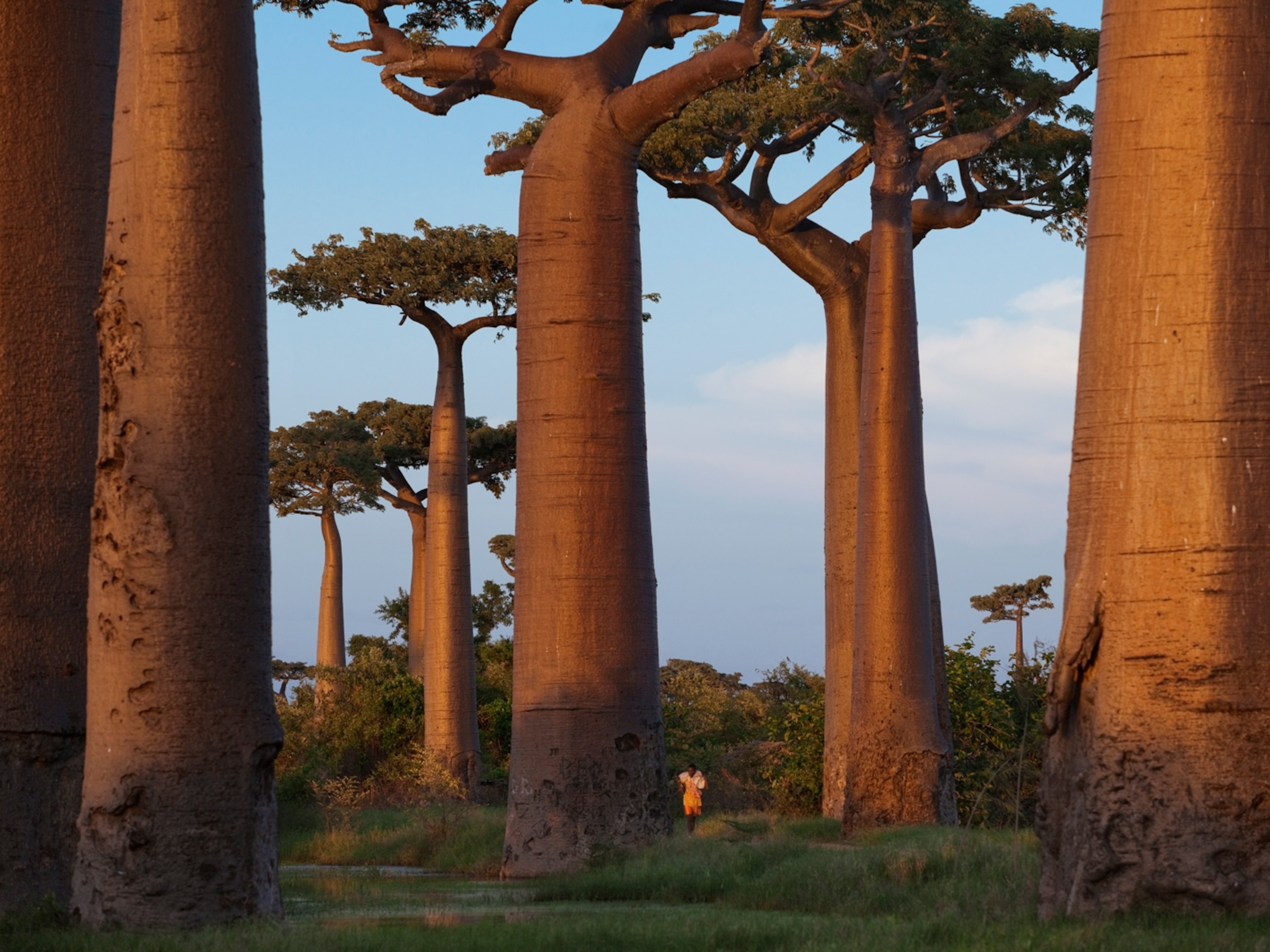




















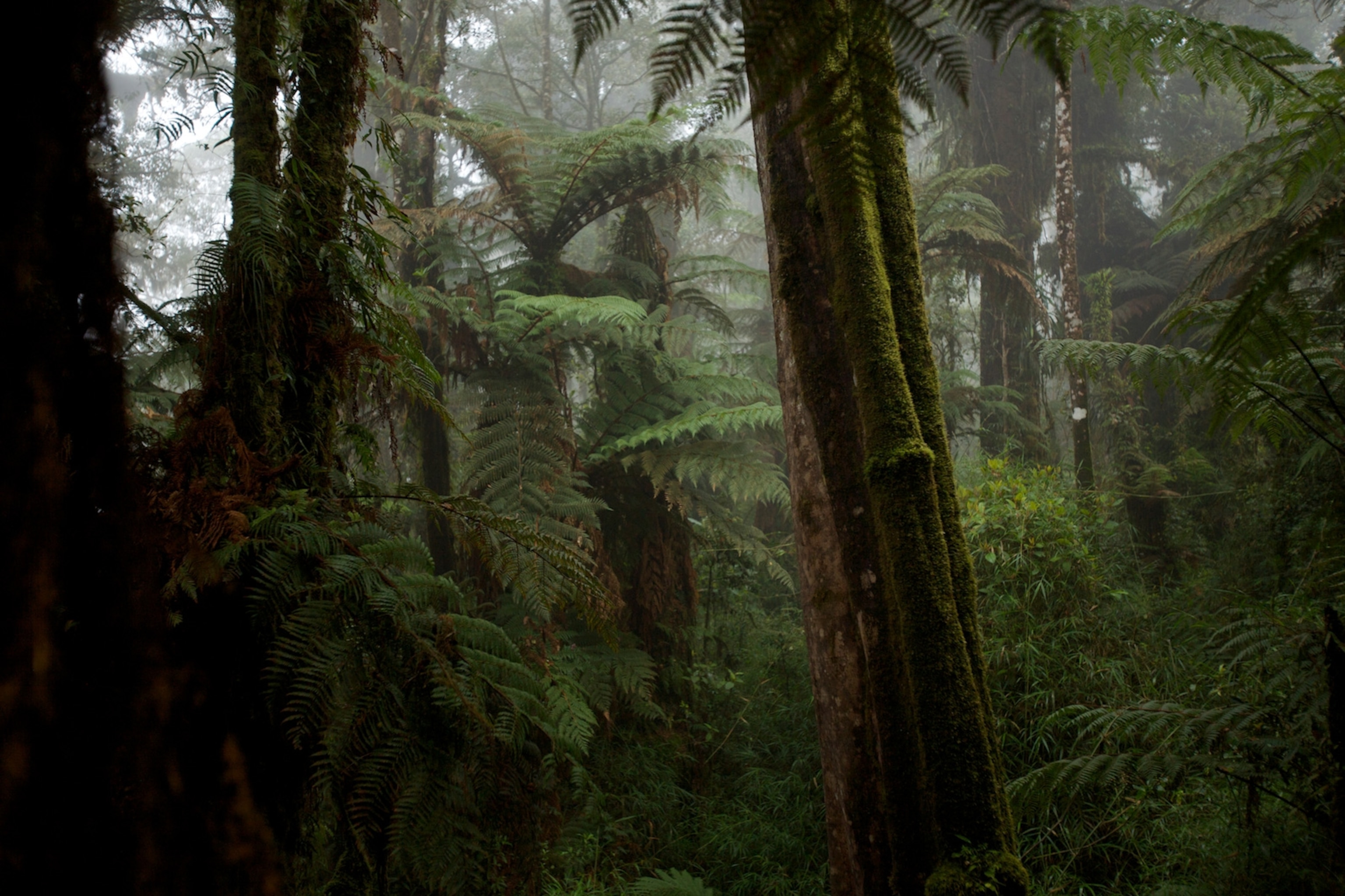

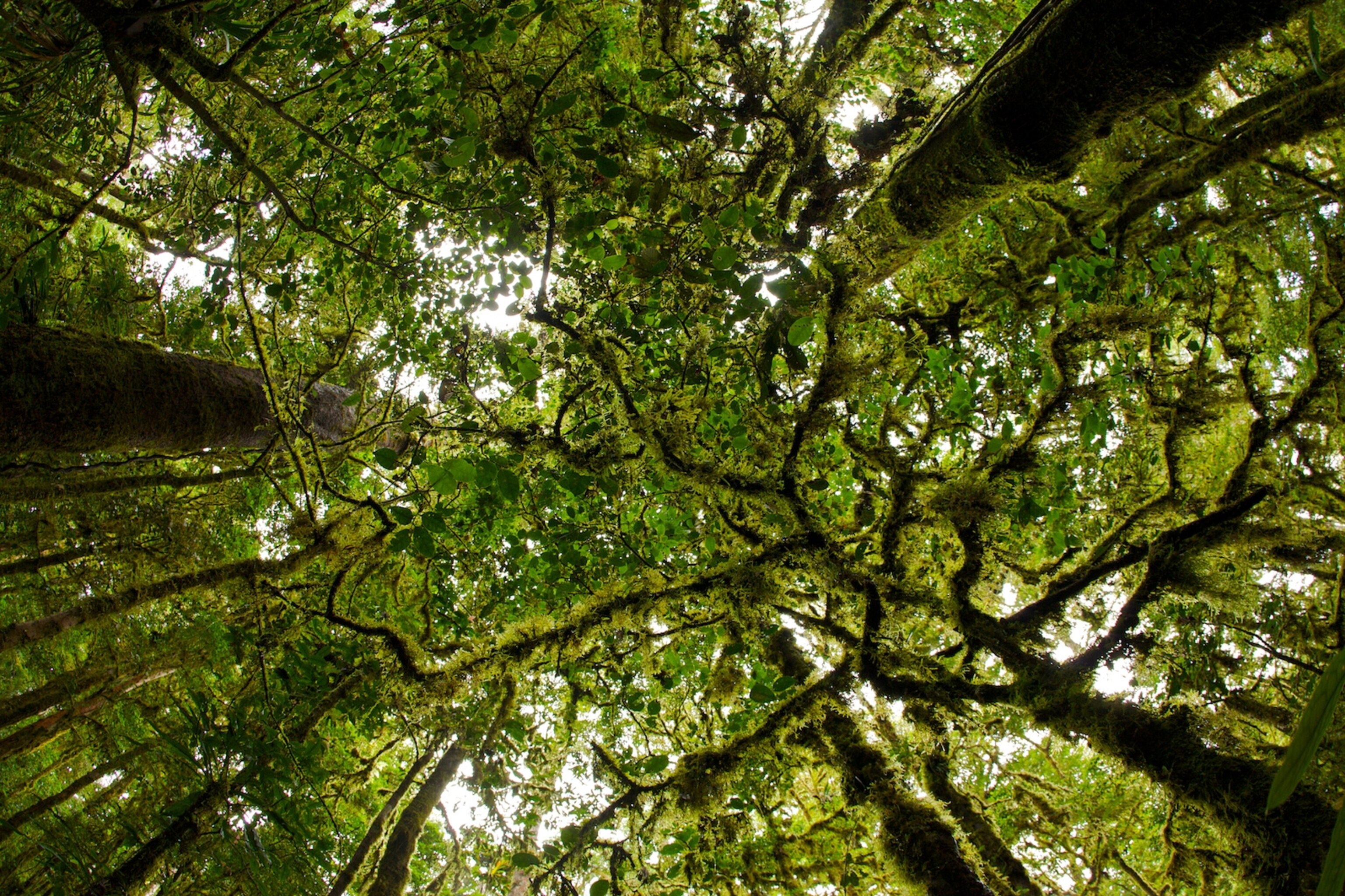


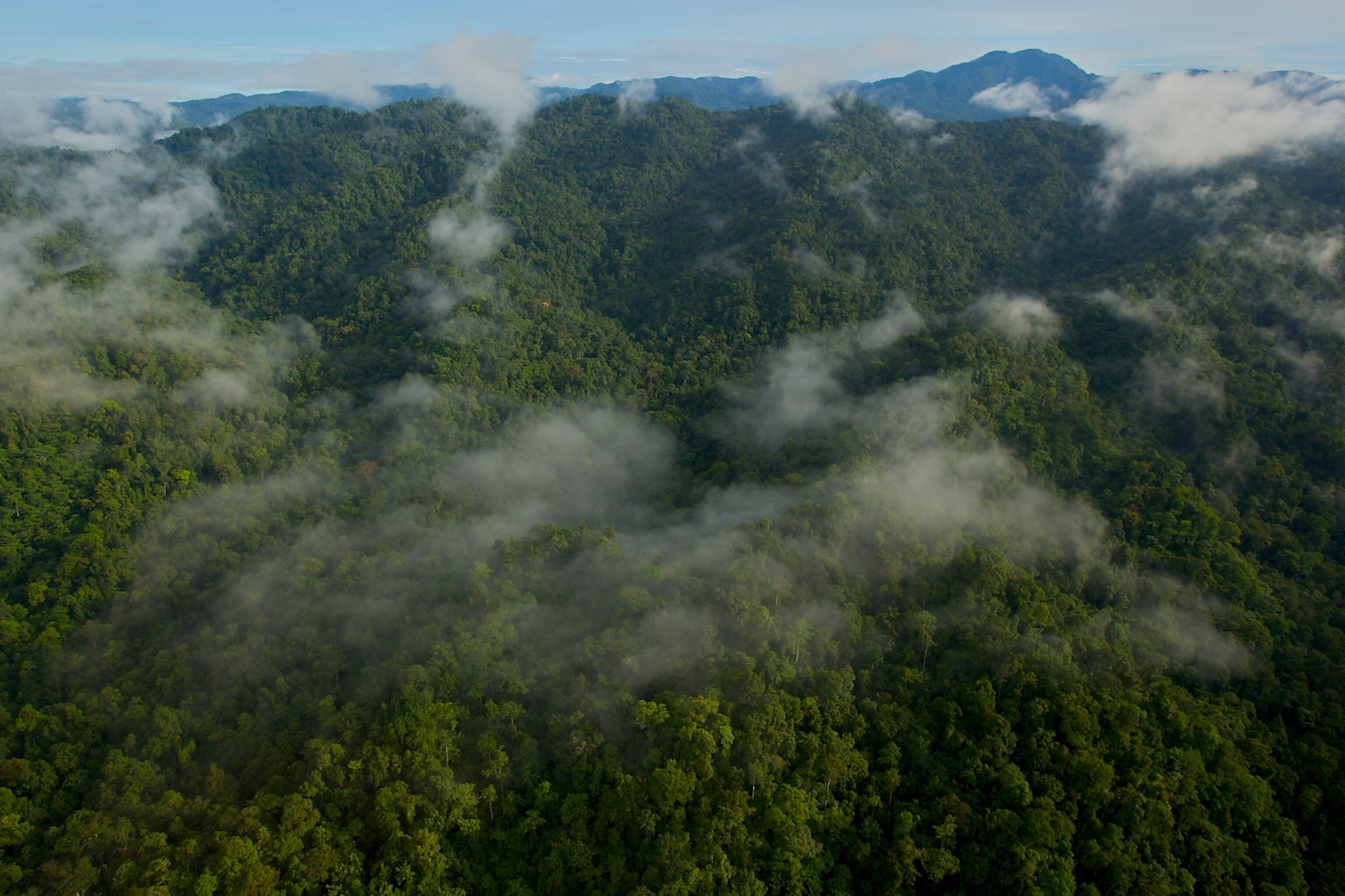
Discovery in the Foja Mountains
A biological expedition to a remote New Guinea rain forest explores a world of bizarre and beautiful creatures.
Brother Henk is remaining remarkably calm about the loss of his clothes. Only hours ago a helicopter dropped him into an opening in the rain forest a mile high in the Foja Mountains on the island of New Guinea, one of the remotest and most difficult to reach places on Earth. The sound of the chopper blades had barely faded when he discovered that his duffel bag was nowhere to be found and what he was wearing—a bucket hat; pink, short-sleeved shirt; jeans; and rubber boots—composed his entire wardrobe for the next three weeks.
Yet Henk van Mastrigt is very happy. Holding his red net, he stalks across a muddy bog, lunging at and occasionally catching one of the jewel-bright butterflies that dart by. "Come down, come close, don't be afraid," he calls to them in his Dutch accent. He stops to urinate on the mud, knowing butterflies will be attracted to minerals in the puddle.
Brother Henk catches a medium-size butterfly. With blunt-ended tweezers he spreads its wings, which are deep black with J-shaped markings in gleaming white. "Oh, this is great, great, great!" he says, a huge smile on his white-bearded face. "Surely a new species to science."
Though he is a Franciscan lay brother and not a formally trained biologist, he's spent decades studying the butterflies of western New Guinea and knows them as well as anyone. If Brother Henk has never seen this bug before, no one has. It's like being present at the creation—or, in one sense, even before the creation, since by the rules of science this species won't exist until it's deposited in a museum and Brother Henk publishes its description in a journal.
"Look, there is the new honeyeater," Brother Henk says, pointing toward the green wall of vegetation at the edge of the bog. A medium-size bird with blackish feathers and brilliant orange flaps of bare facial skin hops through a shrub, picking fruit with its beak. It is a wattled smoky honeyeater, a species found only in the Foja Mountains. Perhaps a dozen scientists have ever seen it alive.
The world's second largest island, New Guinea has for centuries intrigued and challenged even the most adventurous and experienced scientists. In the mid-1800s legendary explorer-scientist Alfred Russel Wallace, who had seen more than a few wild places, wrote that the rugged and densely forested New Guinea landscape presented "an almost impassable barrier to the unknown interior"—a statement that remained true throughout much of the 20th century. As scientists gradually explored other ranges, the Fojas' deep valleys, sheer cliffs, knife-edge ridges, and unbroken forest canopy resisted exploration until biologist Jared Diamond conducted surveys in 1979 and 1981.
Amphibians and Reptiles










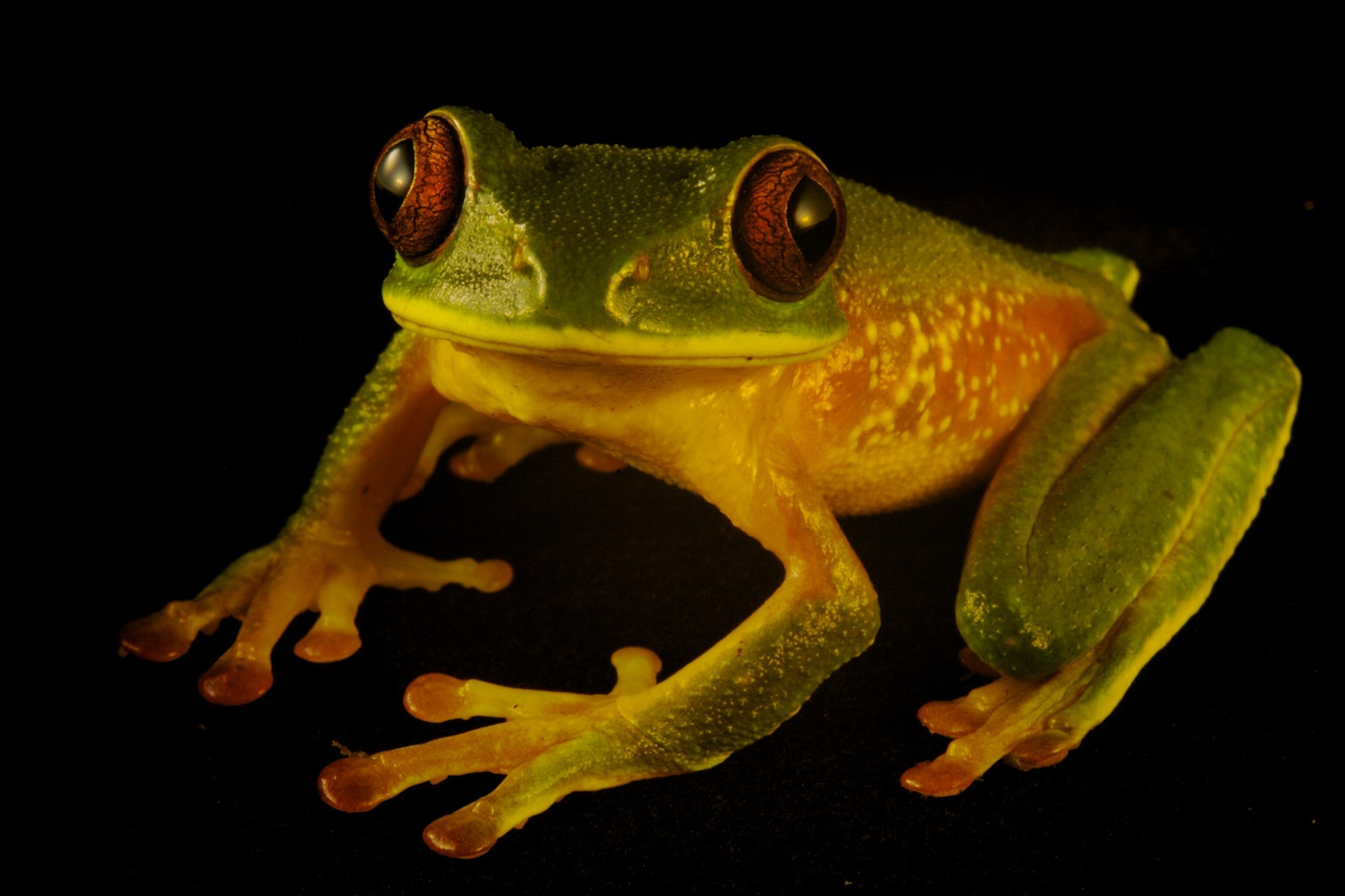











In 2004 ornithologist Bruce Beehler flew over the Fojas and spotted a small clearing in the forest, a bog where annual flooding restricts plant growth to shrubs and grasses—and, more important, where a helicopter could land. In late 2005 Beehler led the first intensive scientific expedition to the Fojas, a 25-day trip conducted by Conservation International's Rapid Assessment Program (RAP), designed to provide biological information to facilitate environmental protection for areas of important biodiversity. During the expedition, members discovered the wattled smoky honeyeater (the first new bird species found in New Guinea since 1950), more than a dozen new frogs, and several mammal and plant species. Henk van Mastrigt collected more than two dozen types of butterflies and moths, now under study as possible new species.
Brother Henk was back for the second RAP expedition to the Fojas in November 2008, and thanks to donations from team members, he did not spend the entire three weeks in a single set of clothes. It was a good thing too, because the torrential rain meant that even those with plenty of clothing spent much of their time with sodden shirts, damp pants, and squishy socks.
The rain, of course, fuels the forest's rich life, manifested in part by lush mosses, ferns, and other epiphytes—plants that grow on other plants—covering tree trunks and limbs. High enough in elevation to be above malarial mosquitoes and known poisonous snakes, residents of the aptly named Bog Camp saw their major threat in falling branches, as epiphytic vegetation soaked up water and stressed limbs, which cracked with the staccato of artillery fire.
Among the dozen or so tents at Bog Camp was a large yellow one that served as a makeshift laboratory, where expedition biologists preserved skins, skeletons, whole animals, and bits of tissue to be taken away for later study and DNA analysis. Here, Kristofer Helgen and Christopher Milensky of the Smithsonian Institution prepared, respectively, mammal and bird specimens, and Australian Paul Oliver worked on frogs and lizards. Ornithologist Ed Scholes of the Cornell Laboratory of Ornithology carried video and audio recorders along forest paths, documenting rare birds of paradise. Botanist Asep Sadili of the Indonesian Institute of Sciences, which cosponsored the expedition, collected plants from a study site near camp.
Birds and Mammals



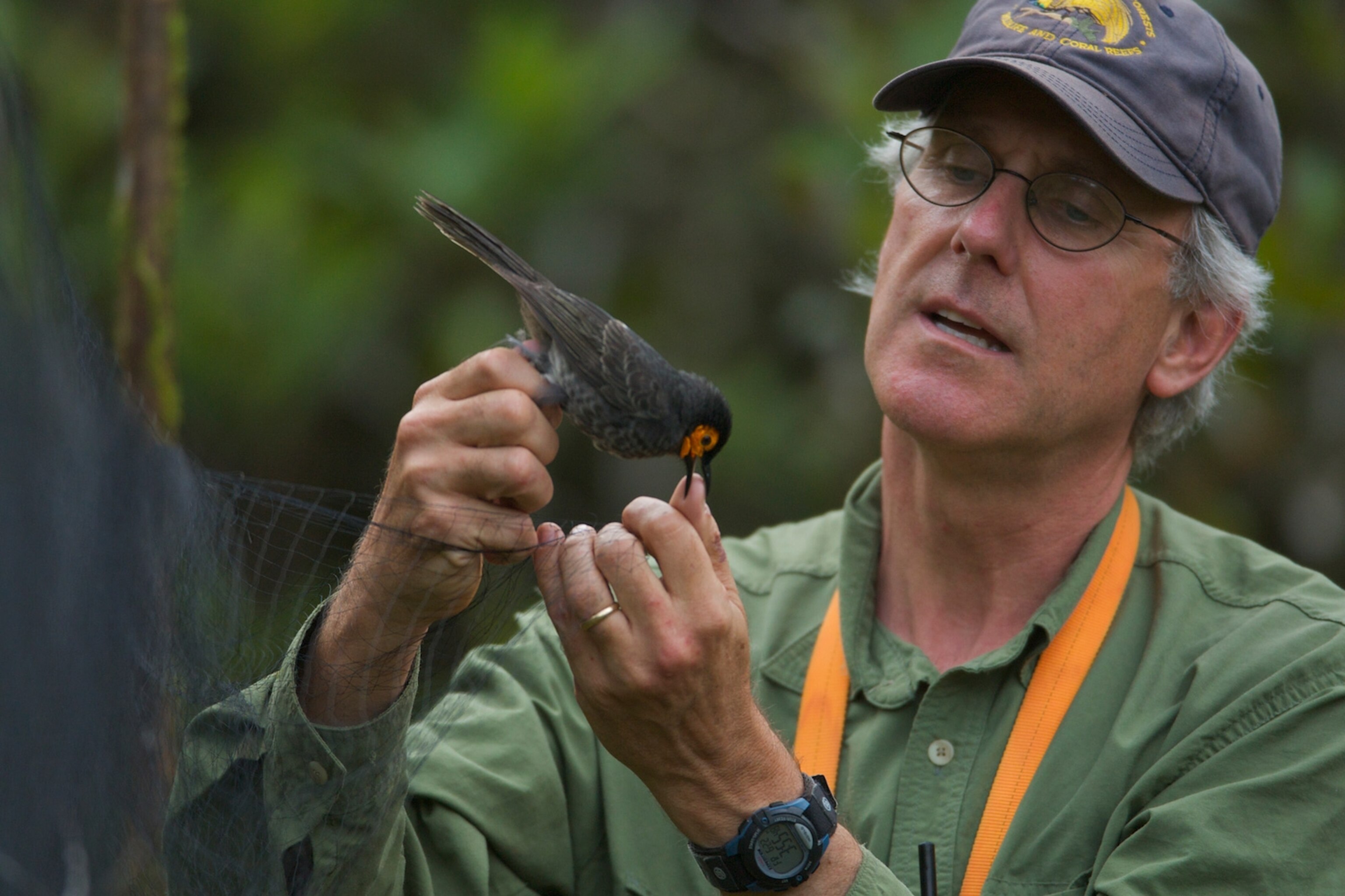














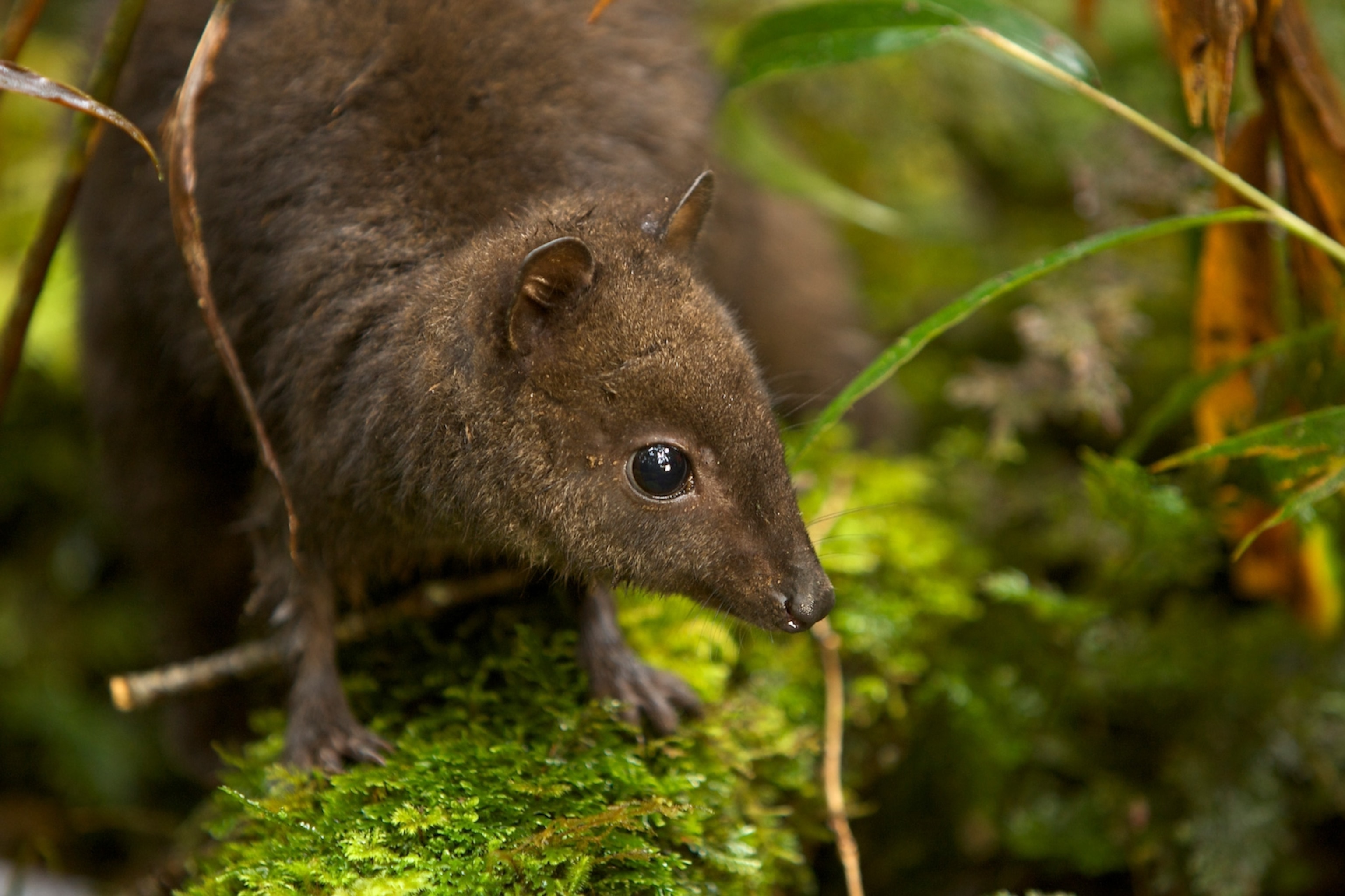








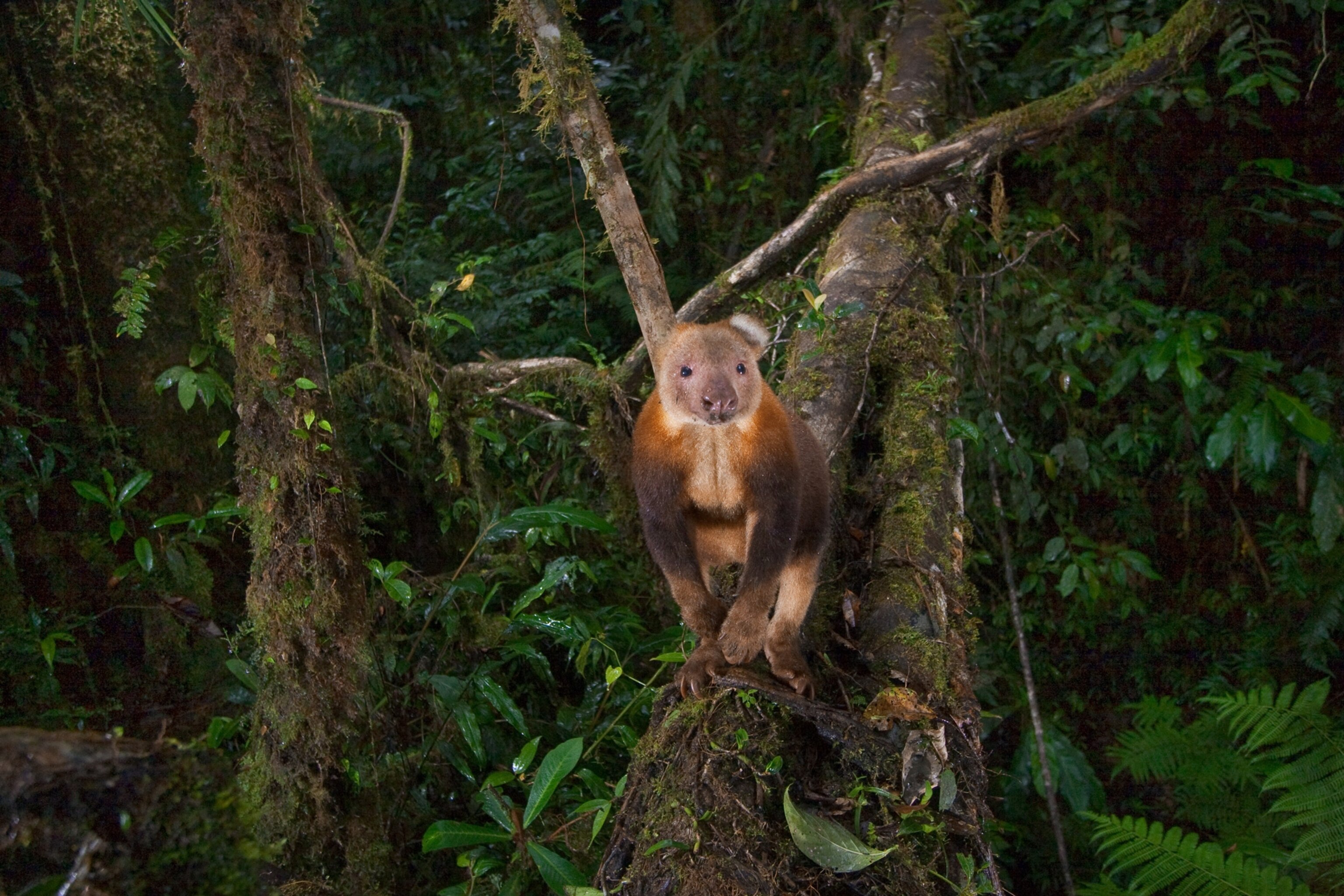





Team members captured animals in various traps and nets and, in some instances, by hand (especially in the case of frogs found by headlamp light on night walks). Many of the larger birds and mammals were brought in by men from a village in the Foja foothills who guided biologists, helped with camp chores, and demonstrated time and again their near-magical knowledge of the ways of the forest.
On the second day of the expedition, three of the hunters returned from a walk carrying a dwarf cassowary, freshly shot with bow and arrow. Though Milensky coveted the three-foot-tall bird, the local men had other ideas, and soon the air was filled with the smell of roasted cassowary. Milensky salvaged the bones. As he laboriously cleaned a femur, he declared, "This may be the first wild-caught specimen for any museum in the past hundred years."
Hunters presented Kris Helgen with other treasures: a tiny wallaby—"It could be the world's smallest true kangaroo," he said of the cottontail-size animal—and a rare, bizarre, long-beaked echidna. This monotreme, an egg-laying mammal related to the platypus, possesses a snout with electroreceptors that help it locate earthworms, which it spears with a harpoon-like, barbed tongue and slurps into its toothless mouth like strands of spaghetti. "This thing is the weirdest mammal in the world," Helgen said, acknowledging, among other attributes, the echidna's muscular body, its sharp spines formed from modified hairs, the female's production of milk through mammary patches (there are no nipples), and the male's four-pronged penis. "It's my favorite mammal," he added—a fact surely not unrelated to the animal's surpassing strangeness and to the challenge of studying it. No one—no scientist, no known New Guinea tribesperson—has ever seen a baby long-beaked echidna.
Daily life in camp came with costs beyond the work of collecting and preparing specimens. Leeches left bloody welts on everyone's legs; nettles caused painful rashes. One night, figuratively at least, it rained maggots inside Helgen's tent. Flies had laid hundreds of eggs on the mesh tent top, and the larvae had hatched, wriggling and hungry. Another night one of the local men ruined the team's entire supply of kerosene when he mistook it for water, poured it into a pot, and added rice to cook dinner. Still, no one stayed discouraged for long at Bog Camp.
Insects






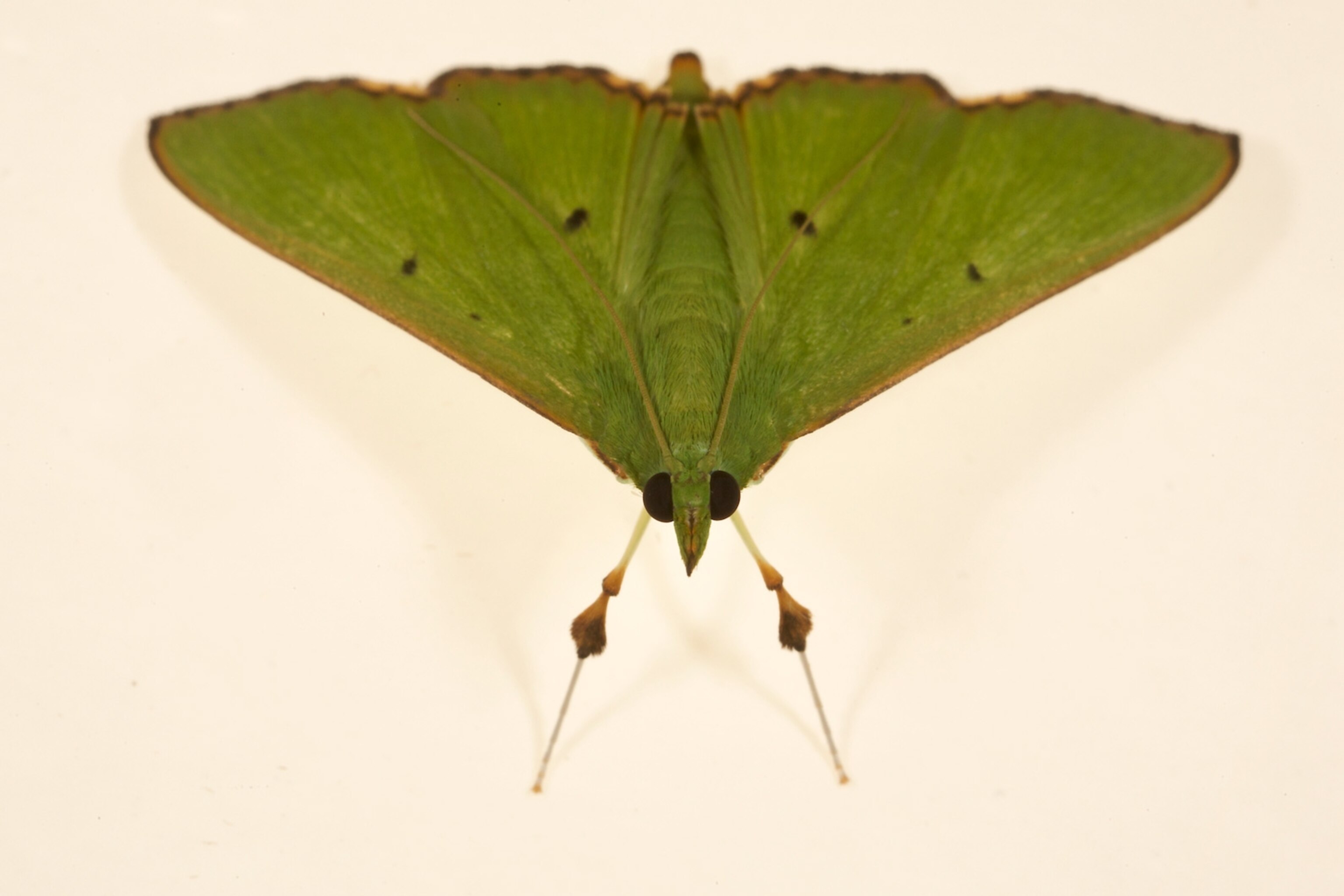












Daylight began with birdsong—especially that of the loud and ubiquitous lesser ground-robin, whose notes recall the first two bars of Scott Joplin's "The Entertainer." The daily routine was punctuated by the harsh screeching of flocks of small parrots called lorikeets, which zoomed overhead like red-and-green bullets; the constant hooing of white-breasted fruit-doves, which magically stayed hidden in the treetops despite brilliant green-and-yellow plumage; and the literally end-less drip of water on tent tops. At day's end came the deafening calls of cicadas—the 5:30 type sounding like car alarms, the 6:00 type resembling police sirens. Then night fell, and frogs chimed in, peeping and beeping like a forest full of 1950s sci-fi robots gone insane.
Each day brought discovery and surprise, from the rare, indeed near-mythic, golden-mantled tree kangaroo (its scientific name is Dendrolagus pulcherrimus, which means "most beautiful tree hare") to the bounty of moths that Brother Henk collected every night, seeming to comprise every possible combination of shape and color.
But science isn't all eureka moments, and some of the scientists' prey proved maddeningly elusive. Near the end of the trip, ornithologist Ed Scholes returned from a day in the forest and sat, frowning, under the blue tarp that served as the dining room. He had hoped to record behavior proving that the parotia (a type of bird of paradise) found in the Fojas was a species that may be distinct from those elsewhere in New Guinea.
"I'm up to a ratio of 400 to one," Scholes grumbled. "Four hundred minutes of sitting in that mosquito-infested pigsty of a blind to one minute of seeing the bird."
When three weeks were up, the list of discoveries had grown from Brother Henk's first-day butterfly to include an appealingly beady-eyed rat, a long-nosed frog caught while it rested on a sack of rice, a huge dragonfly with glittering yellow eyes, a gecko spotted by its fiery orange eyeshine, and many more butterflies and moths. The expedition's biologists found several new species and—even in the tiny fraction of the Fojas' expanse explored—greatly expanded knowledge of the ranges and abundance of New Guinea fauna and flora.
As the helicopter rose from the bog, team members looked out the windows to see flocks of huge white cockatoos, startled by the roaring engine, flying over dark green forest stretching to the horizon. The noise died away, the birds settled back into the treetops, and life in the Foja Mountains returned to centuries-old rhythms, its mysteries scarcely breached.
Related Topics
Go Further
Animals
- How can we protect grizzlies from their biggest threat—trains?How can we protect grizzlies from their biggest threat—trains?
- This ‘saber-toothed’ salmon wasn’t quite what we thoughtThis ‘saber-toothed’ salmon wasn’t quite what we thought
- Why this rhino-zebra friendship makes perfect senseWhy this rhino-zebra friendship makes perfect sense
- When did bioluminescence evolve? It’s older than we thought.When did bioluminescence evolve? It’s older than we thought.
- Soy, skim … spider. Are any of these technically milk?Soy, skim … spider. Are any of these technically milk?
Environment
- Are the Great Lakes the key to solving America’s emissions conundrum?Are the Great Lakes the key to solving America’s emissions conundrum?
- The world’s historic sites face climate change. Can Petra lead the way?The world’s historic sites face climate change. Can Petra lead the way?
- This pristine piece of the Amazon shows nature’s resilienceThis pristine piece of the Amazon shows nature’s resilience
- Listen to 30 years of climate change transformed into haunting musicListen to 30 years of climate change transformed into haunting music
History & Culture
- Meet the original members of the tortured poets departmentMeet the original members of the tortured poets department
- Séances at the White House? Why these first ladies turned to the occultSéances at the White House? Why these first ladies turned to the occult
- Gambling is everywhere now. When is that a problem?Gambling is everywhere now. When is that a problem?
- Beauty is pain—at least it was in 17th-century SpainBeauty is pain—at least it was in 17th-century Spain
Science
- Here's how astronomers found one of the rarest phenomenons in spaceHere's how astronomers found one of the rarest phenomenons in space
- Not an extrovert or introvert? There’s a word for that.Not an extrovert or introvert? There’s a word for that.
- NASA has a plan to clean up space junk—but is going green enough?NASA has a plan to clean up space junk—but is going green enough?
- Soy, skim … spider. Are any of these technically milk?Soy, skim … spider. Are any of these technically milk?
Travel
- This tomb diver was among the first to swim beneath a pyraamidThis tomb diver was among the first to swim beneath a pyraamid
- Dina Macki on Omani cuisine and Zanzibari flavoursDina Macki on Omani cuisine and Zanzibari flavours
- How to see Mexico's Baja California beyond the beachesHow to see Mexico's Baja California beyond the beaches
- Could Mexico's Chepe Express be the ultimate slow rail adventure?Could Mexico's Chepe Express be the ultimate slow rail adventure?







